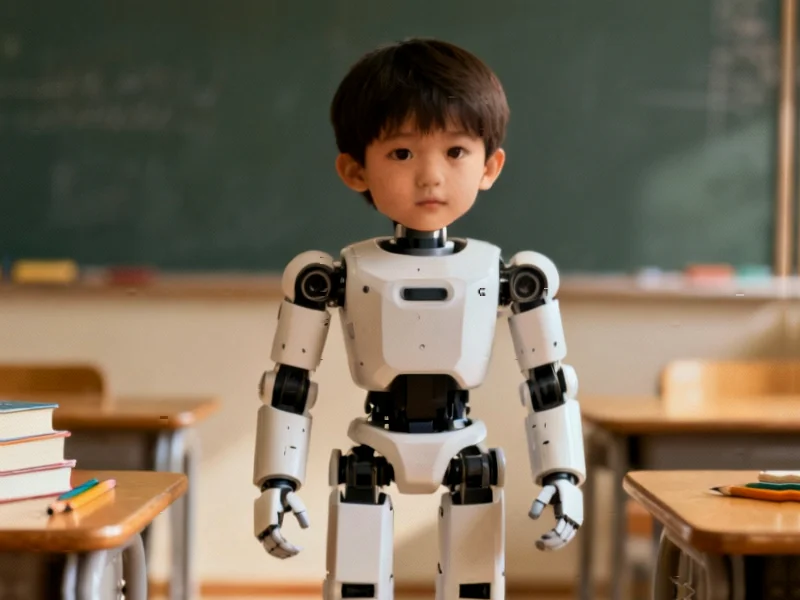According to ExtremeTech, Beijing-based Noetix Robotics has unveiled Bumi, a consumer-oriented humanoid robot priced at approximately $1,400. The 3-foot-tall robot can walk, dance, and interact with humans, with plans for an educational programming interface. This aggressive pricing strategy represents a significant departure from current market standards for humanoid robotics, potentially opening new consumer markets.
Table of Contents
The Democratization of Robotics
The emergence of sub-$1,500 humanoid robots marks a critical inflection point in robotics accessibility. Historically, humanoid platforms have been research-focused tools costing tens or hundreds of thousands of dollars, limiting development to well-funded institutions and corporations. Noetix’s approach suggests they’ve identified manufacturing efficiencies and component cost reductions that eluded earlier entrants. For context, the price differential between Bumi and Tesla’s Optimus represents more than a 90% reduction, comparable to the shift from mainframe computers to personal computing in the 1980s.
Critical Technical and Market Challenges
While the price point is compelling, several critical questions remain unanswered. The demonstration of walking and dancing suggests basic locomotion capabilities, but we lack details about battery life, processing power, sensor sophistication, or durability. Consumer robotics faces particular challenges around safety standards, privacy concerns with integrated cameras and microphones, and the reality that most current startup companies in this space struggle with scaling production while maintaining quality. The educational programming interface mentioned could be a key differentiator, but without technical specifications, it’s unclear whether this represents genuine educational value or simplified entertainment features.
Disrupting Established Market Dynamics
Noetix’s pricing strategy directly challenges the prevailing assumption that sophisticated humanoid robotics must remain expensive. If they can deliver on their promises, this could force established players to reconsider their own pricing models and accelerate the timeline for consumer adoption. The focus on educational applications rather than industrial or service roles represents a strategic market positioning that avoids direct competition with better-funded competitors while potentially creating a pipeline of future developers familiar with their platform. This approach mirrors how companies like Arduino and Raspberry Pi cultivated developer communities around accessible hardware.
Realistic Market Outlook and Timing
The preorder announcement later this year will be the true test of Noetix’s claims. Successful consumer robotics requires not just affordable hardware but robust software ecosystems, reliable customer support, and continuous updates – challenges that have defeated many well-funded ventures. The timing coincides with growing Chinese technological innovation in robotics and AI, suggesting this may be part of a broader competitive push. If Noetix can deliver a functional product at scale, we could see accelerated price compression across the robotics industry, potentially bringing sophisticated robotics into homes and classrooms within 2-3 years rather than the previously projected 5-7 year timeline.



